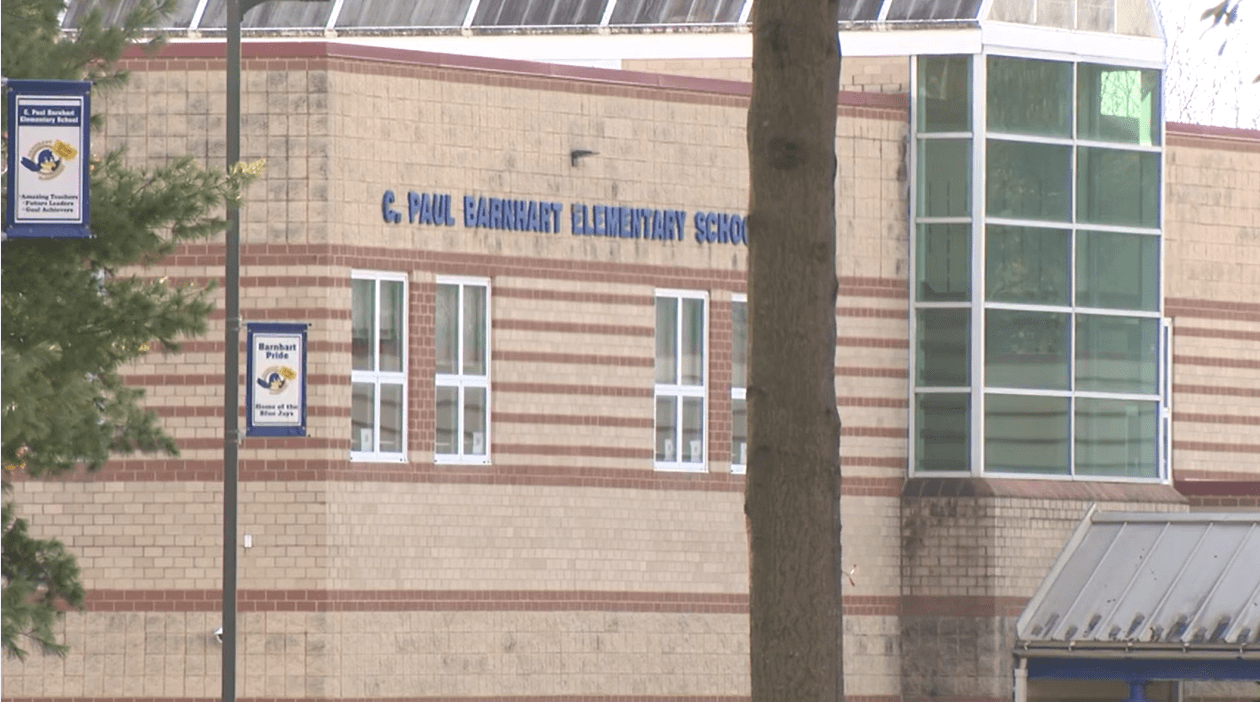HAMPTON ROADS, Va. (WAVY) — The Board of Education has approved six new lab schools, three of which have ties to either Hampton Roads or Western Tidewater. Virginia Gov. Glenn Youngkin has been a champion of lab schools as a way to help students prepare for careers after high school.
Old Dominion University is the college partner for two of the lab schools — Newport News’ proposed lab school, the Maritime Engineering and Environmental Studies Academy developed by ODU in collaboration with Newport News Public Schools, as well as Chesapeake’s Computer Science Lab School, developed by ODU in collaboration with Chesapeake Public Schools.
The Newport News lab school “will focus heavily on student-guided learning through STEM, experiential learning, guided inquiry, design thinking, career and technical education, as well as internships and job shadowing opportunities.” The school will aide in helping the region’s maritime workforce.
It will receive start-up funds and up to $2.205 million in per-pupil funding from the state’s College Partnership Laboratory School Fund over a four-year period. It would serve students in grades 11 and 12. It, like the other lab schools approved, are expected to be financially self-sufficient within several years.
ODU Vice Provost for Academic Affairs Brian K. Payne said that the proposal would serve about 100 students yearly, and would begin with 50 juniors in fall 2025. Operating costs are estimated at $4.8 million over the next six years.
The report from the College Partnership Laboratory Schools Standing Committee notes that the funding amount would go down each year as the school secures other funding sources and it becomes self-sustaining.
“Maritime industries are one of the key economic drivers in our region,” said Dr. Karen Sanzo, director of the Institute for Design Thinking and Leadership Development at ODU in a statement. “In order to best prepare the future maritime workforce and enhance economic and workforce development in Hampton Roads, it is critical that high school students are introduced to the subject matter. Just as critical is the use of evidence-based strategies to teach those students.
“Working with the Newport News Public Schools district, the Maritime Engineering and Environmental Studies Academy will build on the collaborative strengths in our region and address both student and teacher development.”
The Chesapeake lab school, collaborating with Oscar Smith Middle School, has the aim “to empower underrepresented middle school students through transformative opportunities and experiences in combination with an innovative focus on computer science principles.” The program is designed “to prepare students for the technology talent pipeline,” and to increase the number of K-12 teachers who can teach computer science.
The Chesapeake lab school will get start-up funds and up to $5.9 million in per-pupil funding from the lab school fund, and it would focus on students in grades 6 through 8, with an annual enrollment of 300 students, including about 200 in its first year in the 2025-2026 school year.
School operating costs are estimated at about $7.8 million over six years through the 2029-2030 school year.
“ODU is committed to building the next generation of computing professionals,” Sanzo said. “We are excited to work with Chesapeake Public Schools and the amazing professionals at Oscar Smith Middle to create the Computer Science Lab School. Collectively we will identify, design, and implement the most effective teaching strategies to ensure that middle school students receive the foundation they need to embark on future computing pipelines.”
Paul D. Camp Community College is also collaborating with Isle of Wight County Public Schools on the proposed Isle of Maritime Trades Academy lab school, which is designed to be a high school to college work pipeline between Paul D. Camp and the Isle of Wight County school division. It will have an initial primary corporate sponsor, Huntington Ingalls Industries-Newport News Shipbuilding.
It estimates that it would have 40 students — juniors and seniors in high school — in its first year of operation in the 2025-2026 school year, and 80 students per year after that. Of those 80, they would be split up in two career pathways — marine welding and marine electrical, and at its capacity, it will serve 20 students per pathway, per grade level.
This program’s operating costs are estimated at about $5.3 million over six years. It will receive start-up funds and up to $1.728 million in per-pupil funding from the lab school fund.
“The Isle Maritime Trades Academy is not just an avenue to a career pathway for lab school students from Isle of Wight and the surrounding school districts, it will also allow them to be a part of something bigger than themselves — national security,” said Dr. Corey L. McCray, Paul D. Camp Community College president. “Lab school students will ultimately have the opportunity to help build Navy Ships that will ensure the nation’s defense and security. In addition, the IMTA will help our partners at Newport News Shipyard fill the projected 20,000 employees needed over the next five years.”
Other college partners for lab schools in other parts of Virginia include Emory & Henry College, George Mason University and Roanoke College.
Emory & Henry’s proposed lab school is a partnership between the college, along with four southwest Virginia school divisions, the city of Bristol, Va., Virginia Highlands and Wytheville community colleges, the A. Linwood Holton Governor’s School and the Southwest Virginia Higher Education Center.
That partnership would create the Southwest Virginia Healthcare Excellence Academy Lab School, which would put in place a high school career academy for students in grades 10 through 12 and would serve to prepare future healthcare professionals to help deal with worker shortages in the region.
George Mason’s lab school, would partner the university with Northern Virginia Community College and Fairfax County Public Schools to create the Accelerated College and Employability Skills Academy Lab School, or ACCESS Academy. Its mission is to give traditionally underserved students new paths toward high-demand, and high-paying careers while helping them toward two- and four-year degrees.
The Roanoke College lab school, Explore@RC, partners the college with Salem City Schools in the southwestern part of the state and features what it says are three, career-oriented pathways — education/global studies, STEM/healthcare and communications/civic engagement. Students’ work would relate to their selected career pathway, and would tie directly into workforce needs in the Roanoke area.
“With the addition of these six lab schools, the Board has created enriching, future-focused opportunities that reach students across Virginia,” Gov. Glenn Youngkin said in a statement. “These schools are establishing innovative pathways for students to explore potential careers and be better prepared for the future, with a specific focus on addressing the needs and demands of their regions. These lab schools are not just shaping the future of our students, they’re also shaping the future of Virginia.”
State Secretary of Education Aimee Guidera said the programs will prep students for post-secondary education and “meaningful career options.”
Board of Education President Grace Turner Creasey said she is inspired to see how the schools have progressed, “and we are looking forward to seeing the impact they make in the years to come.”
In the current budget, Virginia has a statutory requirement, along with dedicated funding, to move forward and develop lab schools, which “are designed to stimulate the development of innovative education programs for Virginia students from preschool through grade 12,” and they partner with local employers and community organizations, helping highlight how academic success is key for life after school.
It is unclear if the new, two-year budget will include funding for lab schools, since the governor and the General Assembly have not yet reached a budget deal.
Two years ago, the General Assembly approved $100 million to launch new lab schools — partnerships between public school divisions and institutions of higher education with innovative lesson plans. That money includes $5 million for planning grants to support eligible entities in designing a new college lab school, $20 million for initial start-up grants to make one-time purchases to launch the school (no more than $200,000 per lab school), and $75 million for per-pupil operating grants for ongoing operating and maintenance of the lab school.
“The six schools approved … are a direct result of the innovative mindset of the representatives from the higher education institutions and school divisions who transformed their vision and, with the support of their communities, made these Lab Schools a reality,” said Superintendent of Public Instruction Lisa Coons. “I am grateful for every person who worked to create the foundation for these powerful programs, as well as the people who worked behind the scenes to make these Lab Schools a reality for Virginia students. These Lab Schools are poised to help students across the Commonwealth meet the industry demands and standards for the in-demand careers of the future.”


























































